Top 15 Fat Loss Tips

Droves of people plegde to make a change in their lives. Whether it’s to quit smoking, read more, drink less, save money, travel, improve their life/work balance, or to learn something new ... all these pale in numbers to the number one resloution: To lose weight, eat better, and get in shape. If you have the drive, MUSCLE INSIDER has some simple fat-loss tips to get you started off on the right foot. Let’s begin!
1. Use A Protein Powder
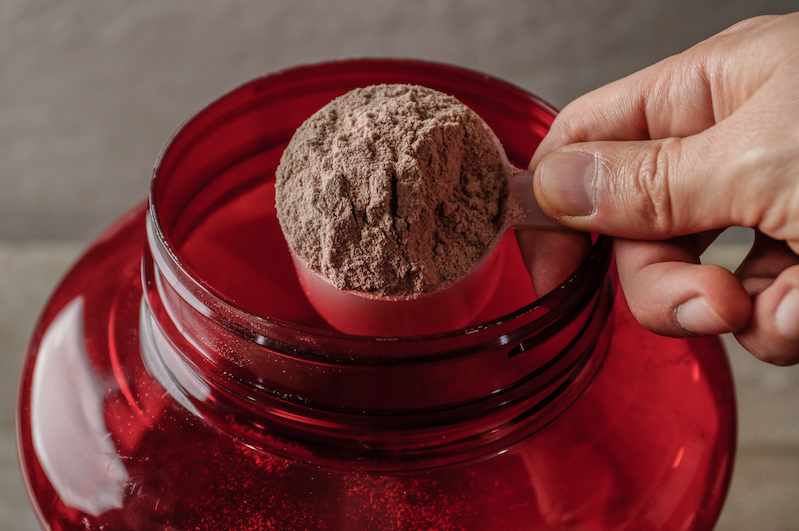 Just like protein foods, protein supplements also offer fat-loss benefits. Protein powders provide not only a thermic effect of feeding but also a convenient alternative when you can’t sit down and eat a chicken breast or piece of beef. Most sources of dietary fat and carbohydrates are very easy to process and have very little thermic effect. On the other hand, the body works much harder to digest protein, and thus it has a much greater calorie-burning effect. The bottom line is that if you bump up your daily protein intake (with food and protein supplements), you can give your daily caloric expenditure a nice, consistent boost in calorie burning
Just like protein foods, protein supplements also offer fat-loss benefits. Protein powders provide not only a thermic effect of feeding but also a convenient alternative when you can’t sit down and eat a chicken breast or piece of beef. Most sources of dietary fat and carbohydrates are very easy to process and have very little thermic effect. On the other hand, the body works much harder to digest protein, and thus it has a much greater calorie-burning effect. The bottom line is that if you bump up your daily protein intake (with food and protein supplements), you can give your daily caloric expenditure a nice, consistent boost in calorie burning
2. Do High-Intensity Interval Training (HIIT) High-intensity interval training (HIIT) is any type of exercise that involves alternating between really intense bursts of activity and low-intensity rest periods. The most common type of activity used for HIIT is sprints combined with jogging or walking as the low-intensity recovery activity. HIIT exercise burns much more calories than low-intensity/ steady-state cardio exercise. HIIT exercise cranks up the “after burn” and increases your body’s energy expenditure for several hours after you stop exercising. HIIT is also great for bodybuilders and athletes who want to maintain their muscle mass, as HIIT training doesn’t burn muscle but primarily burns fat! EDITOR’S NOTE: For more on the effectiveness of HIIT, check out “HIIT and Run”.
High-intensity interval training (HIIT) is any type of exercise that involves alternating between really intense bursts of activity and low-intensity rest periods. The most common type of activity used for HIIT is sprints combined with jogging or walking as the low-intensity recovery activity. HIIT exercise burns much more calories than low-intensity/ steady-state cardio exercise. HIIT exercise cranks up the “after burn” and increases your body’s energy expenditure for several hours after you stop exercising. HIIT is also great for bodybuilders and athletes who want to maintain their muscle mass, as HIIT training doesn’t burn muscle but primarily burns fat! EDITOR’S NOTE: For more on the effectiveness of HIIT, check out “HIIT and Run”.
3. Increase Your Essential Fatty Acid (EFA) Intake
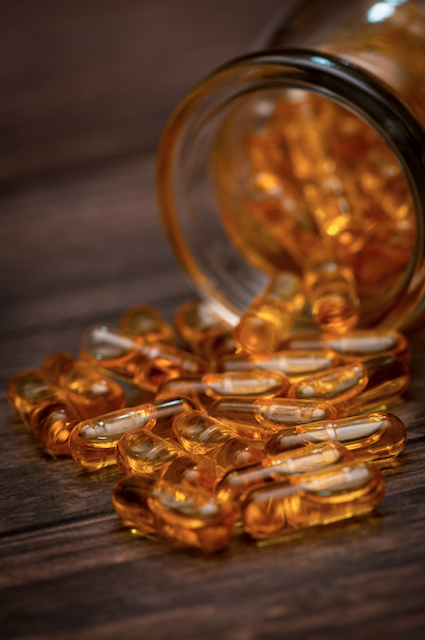 Essential fatty acids (EFAs) are extremely important for supporting fat loss. EFAs work to decrease fat via a variety of pathways. One of the major ones involves the ability of EFAs to increase insulin sensitivity. In fact, they help to mimic the activity of some diabetic drugs and actually reduce the amount of circulating glucose in the bloodstream. This helps to decrease the amount of glucose that ends up being stored as fat in the body. In addition to this, EFAs also help to normalize blood pressure and cholesterol levels. Both of these functions help with proper blood flow, thus facilitating the shunting of nutrients and oxygen to working muscles while training. Other benefi ts include potent anti-infl ammatory effects (helping to curb muscle soreness from training), ability to help prevent some forms of cancer, prevention of joint pain, and even anti-aging properties. Some main sources of EFAs include nuts, fish, and eggs.
Essential fatty acids (EFAs) are extremely important for supporting fat loss. EFAs work to decrease fat via a variety of pathways. One of the major ones involves the ability of EFAs to increase insulin sensitivity. In fact, they help to mimic the activity of some diabetic drugs and actually reduce the amount of circulating glucose in the bloodstream. This helps to decrease the amount of glucose that ends up being stored as fat in the body. In addition to this, EFAs also help to normalize blood pressure and cholesterol levels. Both of these functions help with proper blood flow, thus facilitating the shunting of nutrients and oxygen to working muscles while training. Other benefi ts include potent anti-infl ammatory effects (helping to curb muscle soreness from training), ability to help prevent some forms of cancer, prevention of joint pain, and even anti-aging properties. Some main sources of EFAs include nuts, fish, and eggs.
4. Do Morning And/Or Post-Weight Training Cardio
 Doing cardio training in the morning is a tactic that many competitive fitness athletes have implemented as a means of decreasing body fat. Cardio in the morning forces the body to burn greater amounts of fat because there is a lower amount of stored carbs available in the morning. Cardio at the end of a day makes it much more difficult to burn through all stored carbs because many meals have been consumed by this time, and the body has more carbs to burn off before tapping into fat stores. In a similar way, post-weight-training cardio works to burn higher amounts of fat than pre-weight training cardio. Weight training will burn off stored carbs as energy, and the body actually prefers carbs as a source of fuel for weight training. Once the end of the weight-training session is reached, the body either is very low on carbs or has already run out. At this point, the body has no choice but to switch to its second fuel source, fat. Cardio after weight training will primarily use only fat as its fuel source, and this works to effectively decrease body fat levels at a much higher rate.
Doing cardio training in the morning is a tactic that many competitive fitness athletes have implemented as a means of decreasing body fat. Cardio in the morning forces the body to burn greater amounts of fat because there is a lower amount of stored carbs available in the morning. Cardio at the end of a day makes it much more difficult to burn through all stored carbs because many meals have been consumed by this time, and the body has more carbs to burn off before tapping into fat stores. In a similar way, post-weight-training cardio works to burn higher amounts of fat than pre-weight training cardio. Weight training will burn off stored carbs as energy, and the body actually prefers carbs as a source of fuel for weight training. Once the end of the weight-training session is reached, the body either is very low on carbs or has already run out. At this point, the body has no choice but to switch to its second fuel source, fat. Cardio after weight training will primarily use only fat as its fuel source, and this works to effectively decrease body fat levels at a much higher rate.
5. Eat Protein With Every Meal
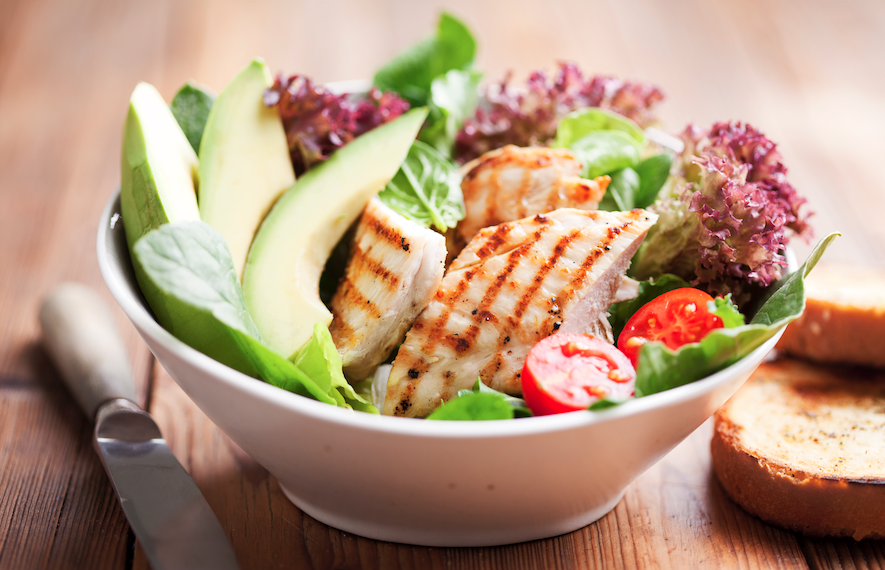 The main reason protein intake can support fat loss is that the thermic effect of digesting protein is much greater than that of carbs and fats. If you don’t already know what thermic effect means, it refers to the increase in energy expenditure above the normal metabolic rate due to the cost of digesting food. In several research studies, subjects who included more protein in their diets burned more fat and more calories throughout the day than subjects who ate less protein. Having protein with every meal also helps with satiety. This will allow for longer periods of time without feeling hungry. Studies show that protein intake actually causes the brain to receive lower levels of appetite-stimulating hormones, thus helping with craving control.
The main reason protein intake can support fat loss is that the thermic effect of digesting protein is much greater than that of carbs and fats. If you don’t already know what thermic effect means, it refers to the increase in energy expenditure above the normal metabolic rate due to the cost of digesting food. In several research studies, subjects who included more protein in their diets burned more fat and more calories throughout the day than subjects who ate less protein. Having protein with every meal also helps with satiety. This will allow for longer periods of time without feeling hungry. Studies show that protein intake actually causes the brain to receive lower levels of appetite-stimulating hormones, thus helping with craving control.
6. Take L-Carnitine And BCAAs Before And During Exercise Carnitine is an amino acid that transports fatty acids from the cytosol to the mitochondria, which is the energy production powerhouse of fat cells. Fatty acids are oxidized as fuel in the mitochondria, and carnitine acts as a shuttle bus in transporting fat to the mitochondria, where it can be burned as energy. Stacking carnitine with branched-chain amino acids is a common practice for athletes who are looking to get into great shape, decrease body fat, and improve performance. Any increase in performance will inherently increase calorie expenditure and fat loss at the same time. BCAAs can affect athletic performance in two different ways. First, BCAAs have a glycogen-sparing effect during exercise. If you don’t already know, glycogen is the form in which carbs are stored in muscle, and it’s used to fuel your workouts. Research studies show that BCAAs spare muscle and liver glycogen stores and increase fat fuel supply to working muscles during exercise. BCAA supplementation can help performance by preventing fatigue of the central nervous system during strenuous physical activity. This reduction in serotonin levels will allow you to exercise with greater intensity and mental focus, which in the end will contribute to greater calorie and fat burning
Carnitine is an amino acid that transports fatty acids from the cytosol to the mitochondria, which is the energy production powerhouse of fat cells. Fatty acids are oxidized as fuel in the mitochondria, and carnitine acts as a shuttle bus in transporting fat to the mitochondria, where it can be burned as energy. Stacking carnitine with branched-chain amino acids is a common practice for athletes who are looking to get into great shape, decrease body fat, and improve performance. Any increase in performance will inherently increase calorie expenditure and fat loss at the same time. BCAAs can affect athletic performance in two different ways. First, BCAAs have a glycogen-sparing effect during exercise. If you don’t already know, glycogen is the form in which carbs are stored in muscle, and it’s used to fuel your workouts. Research studies show that BCAAs spare muscle and liver glycogen stores and increase fat fuel supply to working muscles during exercise. BCAA supplementation can help performance by preventing fatigue of the central nervous system during strenuous physical activity. This reduction in serotonin levels will allow you to exercise with greater intensity and mental focus, which in the end will contribute to greater calorie and fat burning
7. Use A Greens Supplement Twice Daily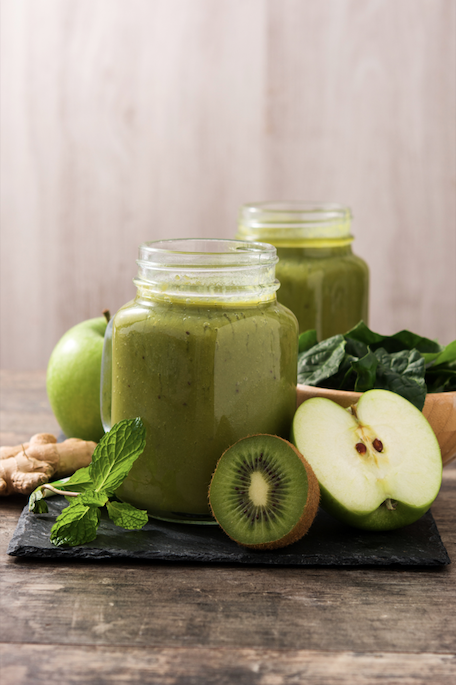 Greens supplements supply the body with healthy antioxidants and also help maintain acid-base balance in the body, the latter of which is essential for fat loss. If you don’t maintain acid-base balance and your body is constantly in an acidic state, your metabolic rate can become depressed over time. That’s clearly not a good scenario, which is why using a good greens supplement on a regular basis should be the foundation of any good fat loss plan.
Greens supplements supply the body with healthy antioxidants and also help maintain acid-base balance in the body, the latter of which is essential for fat loss. If you don’t maintain acid-base balance and your body is constantly in an acidic state, your metabolic rate can become depressed over time. That’s clearly not a good scenario, which is why using a good greens supplement on a regular basis should be the foundation of any good fat loss plan.
8. Increase Your Fiber Intake
 Fibre is essential for digestive health. There are two types: soluble fibre and insoluble fibre. Soluble fibre dissolves in water. This is important because bile acids (which are essentially surplus cholesterol) bind quite easily to this type of fibre. This works to decrease cholesterol and help regulate blood sugar levels, supporting fat loss. Insoluble fibre refers to fibre that doesn’t dissolve in water. More specifically, it regulates bowel movements by creating bulk. This works to moderate the passage of food and nutrients through the digestive tract, allowing the body to absorb more key nutrients to aid with keeping the metabolism working most efficiently so that it can burn fat. In addition, increased insoluble fibre provides a heightened feeling of satiety so that overeating does not become an issue. This fibre also works to detoxify the bowels and essentially “flush out” digestive waste and excess sugars that serve no other purpose than to cause bloating and hinder fat loss. Recent studies show that all fat-loss diet plans work more efficiently with adequate fi bre intake. Additional benefits include lowered blood pressure, lowered cholesterol, and lowered rates of all digestive diseases and ailments. Main sources of fibre include oats, fruits, vegetables, and fibre supplements usually derived from psyllium husks and/or inulin
Fibre is essential for digestive health. There are two types: soluble fibre and insoluble fibre. Soluble fibre dissolves in water. This is important because bile acids (which are essentially surplus cholesterol) bind quite easily to this type of fibre. This works to decrease cholesterol and help regulate blood sugar levels, supporting fat loss. Insoluble fibre refers to fibre that doesn’t dissolve in water. More specifically, it regulates bowel movements by creating bulk. This works to moderate the passage of food and nutrients through the digestive tract, allowing the body to absorb more key nutrients to aid with keeping the metabolism working most efficiently so that it can burn fat. In addition, increased insoluble fibre provides a heightened feeling of satiety so that overeating does not become an issue. This fibre also works to detoxify the bowels and essentially “flush out” digestive waste and excess sugars that serve no other purpose than to cause bloating and hinder fat loss. Recent studies show that all fat-loss diet plans work more efficiently with adequate fi bre intake. Additional benefits include lowered blood pressure, lowered cholesterol, and lowered rates of all digestive diseases and ailments. Main sources of fibre include oats, fruits, vegetables, and fibre supplements usually derived from psyllium husks and/or inulin
9. Focus On Compound Exercises Instead Of Isolation Isolation workouts have always been popular among bodybuilders. But not all of us are bodybuilders. Instead, the majority of the fi tness world is more concerned about staying lean and healthy. Bodybuilders typically already know how to lose body fat when preparing for a competition and use isolation workouts to perfect the shape of their muscles. For those who are more concerned about body fat reduction and maintaining lean muscle mass, compound exercises are best. Compound exercises are those that focus on functional fitness. These types of exercises involve multiple muscles and joints, as opposed to just one isolated muscle group. Squats, for example, are a very popular compound exercise. They engage the core, calves, hamstrings, quads, glutes, and back! Other compound exercises include deadlifts, cleans and presses, bent-over barbell rows, dips, pull-ups (chin-ups), kettlebell swings, jump rope skipping, running, and so on. All of these require the activity of several muscle groups and multiple joints. So, how does this increase fat loss? Quite simply, engaging more muscle groups at one time works to stimulate increased metabolic rate and thermogenesis.
Isolation workouts have always been popular among bodybuilders. But not all of us are bodybuilders. Instead, the majority of the fi tness world is more concerned about staying lean and healthy. Bodybuilders typically already know how to lose body fat when preparing for a competition and use isolation workouts to perfect the shape of their muscles. For those who are more concerned about body fat reduction and maintaining lean muscle mass, compound exercises are best. Compound exercises are those that focus on functional fitness. These types of exercises involve multiple muscles and joints, as opposed to just one isolated muscle group. Squats, for example, are a very popular compound exercise. They engage the core, calves, hamstrings, quads, glutes, and back! Other compound exercises include deadlifts, cleans and presses, bent-over barbell rows, dips, pull-ups (chin-ups), kettlebell swings, jump rope skipping, running, and so on. All of these require the activity of several muscle groups and multiple joints. So, how does this increase fat loss? Quite simply, engaging more muscle groups at one time works to stimulate increased metabolic rate and thermogenesis.
10. Stack CLA With Fish Oil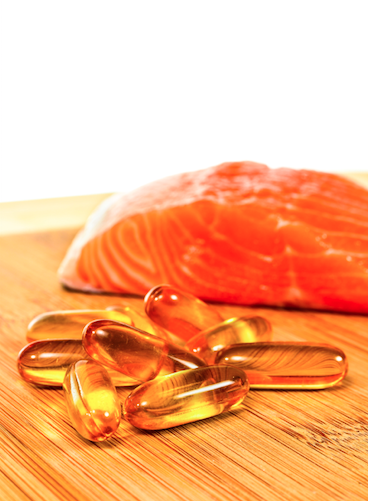 Conjugated linoleic acid (CLA) helps enhance fat loss through multiple mechanisms of action. First, CLA works to reduce body fat by preventing fat accumulation in fat cells. Fat normally enters fat cells through a “door,” which is controlled by enzymes (the “keys”). CLA acts on fat-storing enzymes (the “keys”) and thereby keeps the “doors” to your fat cells locked. Because CLA prevents fat from entering the fat cells, they become smaller and don’t mature in size or density. CLA can also increase energy expenditure when used chronically. CLA has been shown to increase levels of norepinephrine, which is one of the body’s most powerful fatburning hormones. A rise in norepinephrine levels will not only increase caloric expenditure but also stimulate lipolysis (fat burning) at the cellular level. Finally, CLA has also been shown to support increases in lean muscle mass. As most of you already know, muscle is much more metabolically active than fat. So, if you can increase your muscle-to-fat ratio, your body will become more a powerful fat-burning furnace! Fish oil is a great source of omega-3 fat. In fact, several research studies show that daily fish oil supplementation can significantly increase fat oxidation during exercise and at rest. This means you can burn off more fat during your workouts and at rest by simply taking fi sh oil every day. In another research study, subjects who increased their monounsaturated fat intake showed a much greater decrease in body fat compared to subjects with a lower monounsaturated fat intake. It’s pretty clear that polyunsaturated and monounsaturated fats are important when it comes to fat loss. Stacking fish oil with CLA and a balanced EFA intake is one of the most effective ways to enhance daily fat burning
Conjugated linoleic acid (CLA) helps enhance fat loss through multiple mechanisms of action. First, CLA works to reduce body fat by preventing fat accumulation in fat cells. Fat normally enters fat cells through a “door,” which is controlled by enzymes (the “keys”). CLA acts on fat-storing enzymes (the “keys”) and thereby keeps the “doors” to your fat cells locked. Because CLA prevents fat from entering the fat cells, they become smaller and don’t mature in size or density. CLA can also increase energy expenditure when used chronically. CLA has been shown to increase levels of norepinephrine, which is one of the body’s most powerful fatburning hormones. A rise in norepinephrine levels will not only increase caloric expenditure but also stimulate lipolysis (fat burning) at the cellular level. Finally, CLA has also been shown to support increases in lean muscle mass. As most of you already know, muscle is much more metabolically active than fat. So, if you can increase your muscle-to-fat ratio, your body will become more a powerful fat-burning furnace! Fish oil is a great source of omega-3 fat. In fact, several research studies show that daily fish oil supplementation can significantly increase fat oxidation during exercise and at rest. This means you can burn off more fat during your workouts and at rest by simply taking fi sh oil every day. In another research study, subjects who increased their monounsaturated fat intake showed a much greater decrease in body fat compared to subjects with a lower monounsaturated fat intake. It’s pretty clear that polyunsaturated and monounsaturated fats are important when it comes to fat loss. Stacking fish oil with CLA and a balanced EFA intake is one of the most effective ways to enhance daily fat burning
11. Chose Fibrous Carbs Over Simple Starchy Carbs
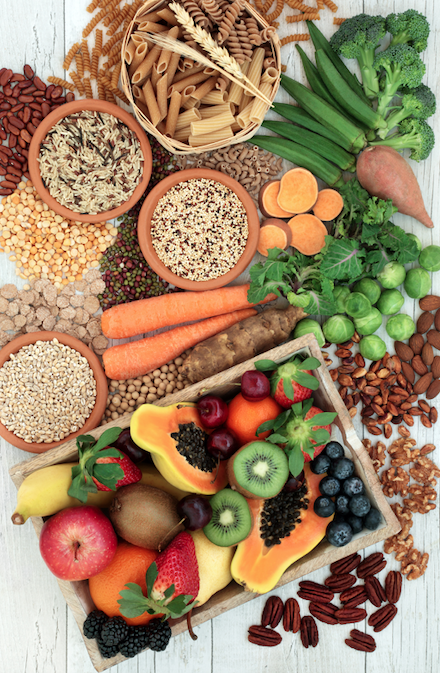 Carbs have gotten a bad rap because of so many weight-loss programs that promote ketogenic (carb-free) diets. But not all carbs have a negative impact on body fat composition. The reality is that fibrous carbs are more useful when it comes to promoting fat loss than simple sugars and starchy carbs. The science behind this principle is actually quite simple. Fibrous carbs don’t cause a sudden spike in insulin levels, compared to simple sugars and starchy carbs. As such, the body is able to utilize the energy from fibrous carbs for much longer periods of time before they might become stored in the body as fat. Simple sugars and starchy carbs cause immediate and extreme boosts in insulin, and if these carbs aren’t used quickly through physical activity, they’re stored as fat. The idea is to focus mostly on fibrous carbs, allowing the body to use them as energy throughout the day as needed and not having to worry about them turning into fat. Studies demonstrate that people who follow diets that include mainly fibrous carbs tend to have higher energy levels and metabolic rates and lower body fat levels.
Carbs have gotten a bad rap because of so many weight-loss programs that promote ketogenic (carb-free) diets. But not all carbs have a negative impact on body fat composition. The reality is that fibrous carbs are more useful when it comes to promoting fat loss than simple sugars and starchy carbs. The science behind this principle is actually quite simple. Fibrous carbs don’t cause a sudden spike in insulin levels, compared to simple sugars and starchy carbs. As such, the body is able to utilize the energy from fibrous carbs for much longer periods of time before they might become stored in the body as fat. Simple sugars and starchy carbs cause immediate and extreme boosts in insulin, and if these carbs aren’t used quickly through physical activity, they’re stored as fat. The idea is to focus mostly on fibrous carbs, allowing the body to use them as energy throughout the day as needed and not having to worry about them turning into fat. Studies demonstrate that people who follow diets that include mainly fibrous carbs tend to have higher energy levels and metabolic rates and lower body fat levels.
12. Perform Resistance Training At Least 3 Times A Week
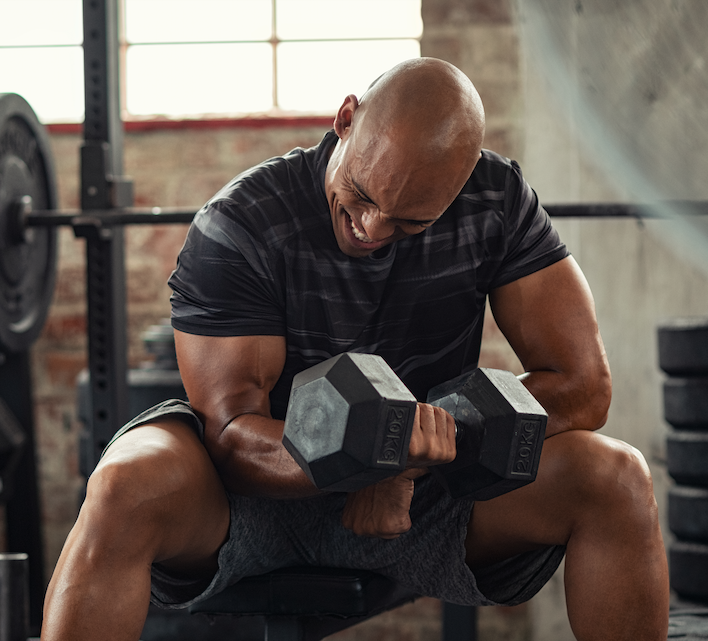 This tip is pretty straightforward: Make sure you’re doing some form of resistance training at least three or four days a week. Cardiovascular activity is great for keeping the heart healthy, and yes, it does burn calories. However, intense resistance training burns signifi cantly more calories and continues to tap into fat loss long after the workout is done. After your cardio session is over, your body returns to its “regular” metabolic rate rather quickly, whereas a weight-training session keeps your body’s metabolism at an elevated levels for several hours after the workout is completed, resulting in greater overall fat loss!
This tip is pretty straightforward: Make sure you’re doing some form of resistance training at least three or four days a week. Cardiovascular activity is great for keeping the heart healthy, and yes, it does burn calories. However, intense resistance training burns signifi cantly more calories and continues to tap into fat loss long after the workout is done. After your cardio session is over, your body returns to its “regular” metabolic rate rather quickly, whereas a weight-training session keeps your body’s metabolism at an elevated levels for several hours after the workout is completed, resulting in greater overall fat loss!
13. Increase Your Daily Nonexercise Activity Thermogenisis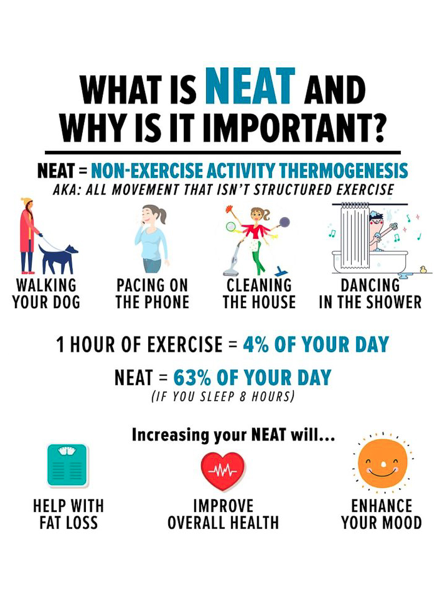 Many people feel as though the gym is the only place where fat burning can occur. This, however, is not true at all! In fact, fitness competitors and trainers often advocate the increase of thermogenesis throughout the day via small changes of lifestyle. One of the main means of doing this is focusing on walking as much as possible. This will ensure that more net calories are burned by the end of each day. Other means of increasing non-exercise thermogenesis include taking stairs instead of an elevator or taking longer walking routes to destinations instead of shortcuts. The key is to try to change the means of functioning on a regular day-to-day basis. Doing your own yard work instead of having a lawn-care company do the work is an excellent means of increasing non-exercise activity thermogenesis. Another suggestion is to utilize days off from work as active days, ensuring that days off aren’t spent on the couch, but instead on buying groceries, walking to get a haircut, cleaning the house, and running any other errands. These changes will have a measurable impact on thermogenesis. Being more active and avoiding shortcuts will strengthen muscles, boost daily productivity, and increase metabolism. What is the end result of these changes? Increased thermogenesis, which translates into greater amounts of fat burned!
Many people feel as though the gym is the only place where fat burning can occur. This, however, is not true at all! In fact, fitness competitors and trainers often advocate the increase of thermogenesis throughout the day via small changes of lifestyle. One of the main means of doing this is focusing on walking as much as possible. This will ensure that more net calories are burned by the end of each day. Other means of increasing non-exercise thermogenesis include taking stairs instead of an elevator or taking longer walking routes to destinations instead of shortcuts. The key is to try to change the means of functioning on a regular day-to-day basis. Doing your own yard work instead of having a lawn-care company do the work is an excellent means of increasing non-exercise activity thermogenesis. Another suggestion is to utilize days off from work as active days, ensuring that days off aren’t spent on the couch, but instead on buying groceries, walking to get a haircut, cleaning the house, and running any other errands. These changes will have a measurable impact on thermogenesis. Being more active and avoiding shortcuts will strengthen muscles, boost daily productivity, and increase metabolism. What is the end result of these changes? Increased thermogenesis, which translates into greater amounts of fat burned!
14. Use A Fat Burner Stack Before Exercise Before you even consider using a fat burner, a solid training program and clean diet are essential. After your diet and training are in order, the right fat-burning supplements can go a long way in helping you reach your fat-loss goals. Three of our favorite fat-fi ghting ingredients are raspberry ketone, CH-19 sweet red pepper, and caffeine. Raspberry ketone enhances norepinephrine-induced lipolysis via an increase in the translocation of HSL from the cytosol to the lipid droplets in fat cells. CH-19 sweet contains three known capsaicinoid-like substances that can affect fat loss: capsiate, dihydrocapsiate and nordihydrocapsiate. CH-19 sweet can increase core body temperature by stimulating the vanilloid receptors and increasing oxygen consumption, uncoupling proteins 1 and 2 (UCP1 and UCP2) and gene transcription of UCP2 mRNA in fat tissue. Finally, caffeine causes a variety of physiological effects that result in the mobilization and oxidation of fat. Studies show that when combined with green tea, caffeine’s thermogenic properties are even greater! Caffeine also gives a great energy kick and will increase mental alertness, cognition, and overall physical performance!
Before you even consider using a fat burner, a solid training program and clean diet are essential. After your diet and training are in order, the right fat-burning supplements can go a long way in helping you reach your fat-loss goals. Three of our favorite fat-fi ghting ingredients are raspberry ketone, CH-19 sweet red pepper, and caffeine. Raspberry ketone enhances norepinephrine-induced lipolysis via an increase in the translocation of HSL from the cytosol to the lipid droplets in fat cells. CH-19 sweet contains three known capsaicinoid-like substances that can affect fat loss: capsiate, dihydrocapsiate and nordihydrocapsiate. CH-19 sweet can increase core body temperature by stimulating the vanilloid receptors and increasing oxygen consumption, uncoupling proteins 1 and 2 (UCP1 and UCP2) and gene transcription of UCP2 mRNA in fat tissue. Finally, caffeine causes a variety of physiological effects that result in the mobilization and oxidation of fat. Studies show that when combined with green tea, caffeine’s thermogenic properties are even greater! Caffeine also gives a great energy kick and will increase mental alertness, cognition, and overall physical performance!
15. Drink Water, Water And More Water!
 This point is often ignored. We’ve all heard about the benefi ts of increased water intake from teachers and parents when we were growing up. Now as adults, we’re hearing the same from doctors and nutritionists. So, is water really that important? In short, yes! In fact, water is the most important aspect of maintaining a healthy biological self. It’s needed for nearly every process in the human body, even for fat loss. Water works to facilitate the transfer of nutrients from food into useable forms for the body. More importantly, it works in muscle cells to maintain a positive nitrogen balance and promote muscle growth and recovery. Alongside fi bre in the digestive tract, water serves as a means of moving waste along without causing strain in the bowels. Water is needed to add “bulk” for digestive purposes, and consequently works as a means of cleaning the digestive tract. Another interesting fact is that as fat cells decrease in size, they release water. This is one of the reasons why sweating goes hand in hand with burning fat. Thus, the body requires more water to replace the amount lost, and to provide the body with essential electrolytes. Water also works to keep the urinary tract healthy. It does this by means of fl ushing toxins out of the kidneys, through the bladder, and out of the body. Other benefits of increased water intake include supporting the body’s natural ability to cool itself, maintaining the integrity of all cells and cell processes in the body, keeping skin soft and moisturized, preventing dehydration during times of increased heat and/or physical activity, and even supporting healthy hormonal function.
This point is often ignored. We’ve all heard about the benefi ts of increased water intake from teachers and parents when we were growing up. Now as adults, we’re hearing the same from doctors and nutritionists. So, is water really that important? In short, yes! In fact, water is the most important aspect of maintaining a healthy biological self. It’s needed for nearly every process in the human body, even for fat loss. Water works to facilitate the transfer of nutrients from food into useable forms for the body. More importantly, it works in muscle cells to maintain a positive nitrogen balance and promote muscle growth and recovery. Alongside fi bre in the digestive tract, water serves as a means of moving waste along without causing strain in the bowels. Water is needed to add “bulk” for digestive purposes, and consequently works as a means of cleaning the digestive tract. Another interesting fact is that as fat cells decrease in size, they release water. This is one of the reasons why sweating goes hand in hand with burning fat. Thus, the body requires more water to replace the amount lost, and to provide the body with essential electrolytes. Water also works to keep the urinary tract healthy. It does this by means of fl ushing toxins out of the kidneys, through the bladder, and out of the body. Other benefits of increased water intake include supporting the body’s natural ability to cool itself, maintaining the integrity of all cells and cell processes in the body, keeping skin soft and moisturized, preventing dehydration during times of increased heat and/or physical activity, and even supporting healthy hormonal function.

